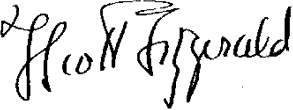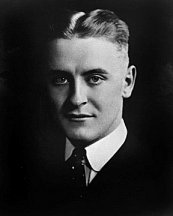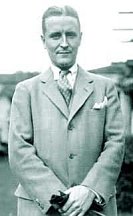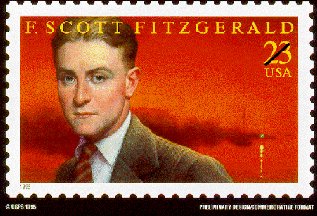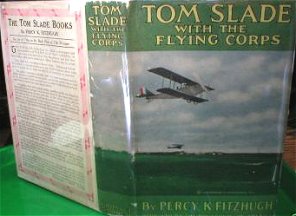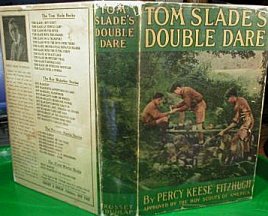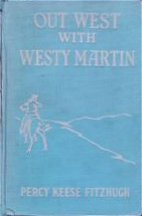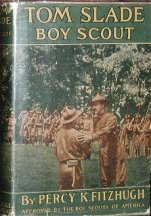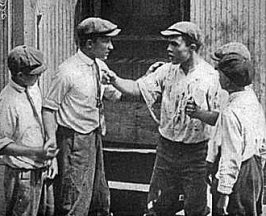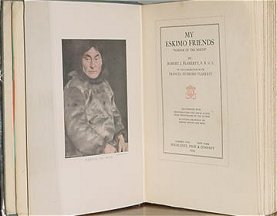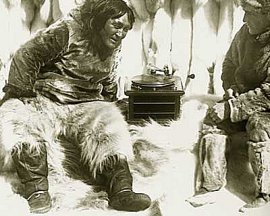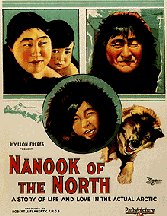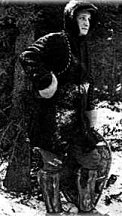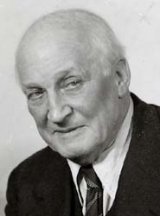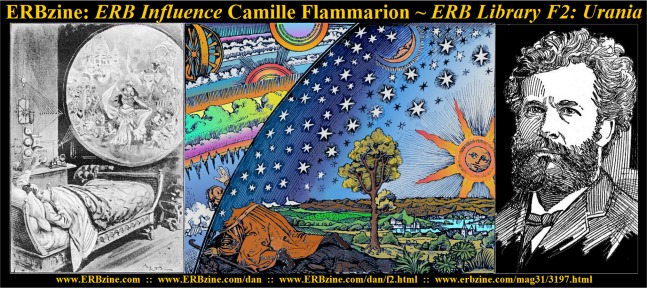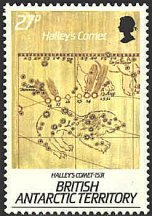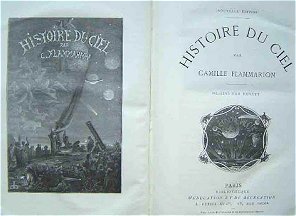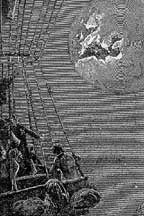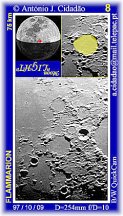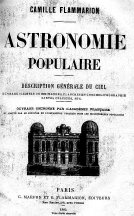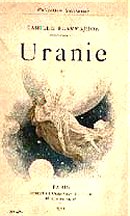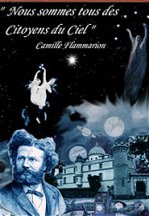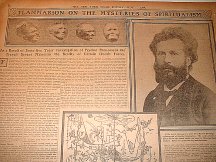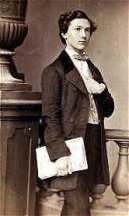 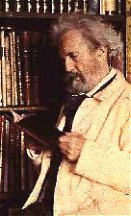 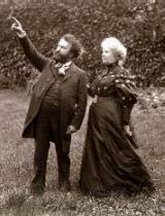 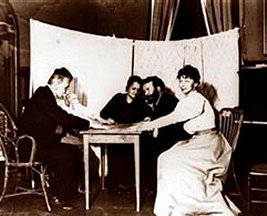 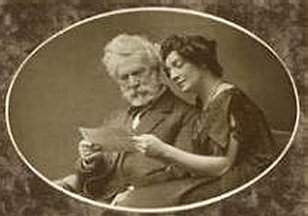 Nicolas Camille Flammarion (February 26, 1842 - June
3, 1925): was born in 1842 at Montigny-le-Roi in the department of
Haute Marne, France. He first studied theology, but early got interested
in astronomy. At age 16, in 1858, he wrote a 500-page manuscript, Cosmologie
Universelle, and became an assistent of LeVerrier (the man whose calculations
had led to the discovery of Neptune) at Paris Observatory. From 1862 to
1867, he temporarily worked at the Bureau of Longitudes, then returning
to the Observatory where he got involved in the program of double star
observing. This project resulted in publishing a catalog of 10,000 double
stars in 1878.
Nicolas Camille Flammarion (February 26, 1842 - June
3, 1925): was born in 1842 at Montigny-le-Roi in the department of
Haute Marne, France. He first studied theology, but early got interested
in astronomy. At age 16, in 1858, he wrote a 500-page manuscript, Cosmologie
Universelle, and became an assistent of LeVerrier (the man whose calculations
had led to the discovery of Neptune) at Paris Observatory. From 1862 to
1867, he temporarily worked at the Bureau of Longitudes, then returning
to the Observatory where he got involved in the program of double star
observing. This project resulted in publishing a catalog of 10,000 double
stars in 1878.
Besides, Flammarion observed the Moon and planet Mars.
In 1873 and 1885, he brought up the hypothesis that Mars' color might be
attributed to vegetation. He published several popular books (L'astronomie
Populaire in 1879, of which over 100,000 copies were sold and an English
translation by J.E. Gore appeared in 1894, as well as a book on Mars, La
Planète Mars, supporting the existence of "canals", built by an
advanced civilisation, Vol. 1 in 1892 and Vol. 2 in 1909), and encouraged
amateur astronomy. In 1877, Flammarion founded the Astronomical Society
of France. In 1882, he was donated a private observatory and estate by
a M. Meret who admired his work. In 1922, he was made a Commander
of the Legion of Honor for his astronomical life-work. Camille Flammarion
passed away on June 3, 1925 in Juvisy-sur-Orge (Essonne, France).
Flammarion was honored by the naming of a Moon Crater
(3.4S, 3.7W, 74.0 km diameter, in 1935) and a Mars Crater (25.4N, 311.8W,
173.0 km, in 1973). Asteroid (1021) Flammario has been discovered by Max
Wolf on March 11, 1924 and provisionally known as 1924 RG; also as A910
CE and 1977 UM from indepnedent findings. In 1877, Camille Flammarion
had found and acquired Messier's personal copy and notes of the Messier
Catalog from an old book store. He used this as reference for various works
including a revised version of the catalog. Evaluating Messier's handwritten
notes, he tentatively identified M102 with NGC 5866 before 1917, and in
1921, he added M104 to the Messier Catalog, which he identified with William
Herschel's H I.43 or NGC 4594. This was the first of a number of additions
to Messier's catalog.
Camille Flammarion, despite is scientific background as
an astronomer, once stated "spiritualism was not a religion but a science",
but in his last book 'Natural Unknown Forces', published in 1909, he admitted
not to be able to give a complete and conclusive explanation of the
phenomena observed by him for more than 40 years.
A
DETAILED CHRONOLOGY
Public attention was first drawn to the Martian canals,
mainly through the efforts of Schiaparelli and the French astronomer Camille
Flammarion. However Percival Lowell kept the canals in the public's
attention. Lowell was born into a wealthy Massachusetts family and
was well educated (he graduated from Harvard). While he was
aware of current astronomical theories, he seemed more interested in other
matters (which included travels to Japan). He owned a
small telescope, but there is no evidence he did any serious observing
with it. However, Lowell was well connected; among his numerous
acquaintances was the Harvard astronomer, W. H. Pickering. Lowell
and Pickering corresponded with each other on the subject of Mars.
1893: Lowell was given one of Flammarion's books as a
Christmas present. This book discussed what was known about Mars,
including the canals and Flammarion's own ideas, in particular the suggestion
that the canals might be signs of intelligent life. Lowell read the
book and became obsessed with Mars.
1894: Only someone with Lowell's wealth and connections
would take this obsession to the next step. Lowell decided to build
an observatory he could use to study the red planet. He did not take
the easy approach and build an observatory near his home in Boston; rather
he considered many possible locations in an attempt to find the best seeing
conditions. Seeing is a term used by astronomers; good seeing means
there is little or no turbulence in the atmosphere. Even though
he wasn't the first to understand the importance of good seeing, it wasn't
widely understood at the time and Lowell made a large number of people
aware of it. Lowell convinced Pickering to join him in a trip to
Arizona to scout out possible locations. Pickering brought his assistant,
Andrew Douglass and eventually the three of them set up an observatory
near Flagstaff and conducted systematic observations of the red planet.
These observations gave Lowell a well-deserved reputation as one of the
best planetary observers. Pickering left the observatory after a
couple years, but Douglass stayed until he was fired in 1901. That
is when Douglass started doubting Lowell's canal observations.
To fill the positions Lowell hired Vesto M Slipher, Carl Lampland and Vesto
Slipher's brother Earl C Slipher as assistants.
In 1902 Lowell was appointed to the Massachusetts Institute
of Technology as a non-resident astronomer. He could have just
continued with his observations and be remembered as a skilled astronomer.
However Lowell was not content to just observe. He had numerous theories,
some of which involved canals and the intelligent creatures that supposedly
built them. These theories were internally consistent and very ellaborate.
1906: Lowell publishes a book "Mars and its Canals."
This book was widely read by the general public and goes into detail on
Lowell's ideas on the canals. He claims the canals were built
by Martians for the purpose of transporting water from the poles to the
dry Martian plains.
1907: Alfred Russel Wallace (a well known biologist)
responded with a book of his own in which he argued that Mars is completely
uninhabitable. Wallace used measurements of the light coming from
Mars and argued that Mars has a surface temperature of minus 35 degrees
Farenheit. Lowell's claim that there was liquid water must be wrong.
He also concluded that the polar caps consisted of frozen carbon dioxide
not water ice as Lowell and many others had assumed.
1909: The available observations did not always support
Lowell's ideas. There was growing doubt about the existence of the
canals themselves, not to mention the rest of Lowell's ideas.
When he encountered skepticism, Lowell became dogmatic and found new audiences
for his ideas by giving public lectures, writing books and writing articles
in popular magazines. Lowell became an outcast in the scientific
community. However he had support from a few scientists.
In particular, Flammarion was always sympathetic to Lowell and his ideas.
He has become well known and respected by the general public.
Lowell's activities discouraged many scientists, particularly in the United
States, from studying Mars as it no longer seemed a "serious" subject worthy
of scientific pursuit. However in Lowell's defense, some have argued
that he deserves credit for developing modern planetology, a word Lowell
invented. He originated the notion that the Martian climate has changed
over time, a notion we now believe to be correct. He insisted that
any theory of planetary evolution needed to account for changes in all
the planets not just the planet a scientist happened to be studying.
And he was the first to suggest that Mars is the best location to test
theories of climate change. This might help scientists studying changing
in the Earth's climate. In some respects Lowell was almost
a hundred years ahead of his time. On the other hand, his ideas on
possible Martian biology seem antiquated to the modern observer.
The canal controversy would not be completely resolved
until spacecraft arrived at Mars. In the 1960's most scientists thought
there were no canals on Mars, however there were a few exceptions, such
as Earl Slipher. He wrote several books, some of which contained
photographs. Slipher claimed these photographs had lines in the same
place as the canals of Percival Lowell. One of these books was published
as late as 1964. That same year, after a few U. S. and soviet failures,
a U. S. spacecraft, Mariner 4, is the first to flyby Mars. In 1969,
Neil Armstrong walks on the Moon. Some consider that a manned mission
to Mars is the next step. However there are problems with the idea.
A round trip would take two years. Enough fuel and water must be
carried on board so the astronauts could survive and return to earth.
The weight of that fuel and water adds to the expense. A one way
manned trip to Mars (assuming one could find anyone to volunteer for such
a thing) seemed manageable, but a round trip seemed too expensive and too
difficult. To date, it has never been attempted, but the idea has been
tempting and there are plans to send people to Mars (it remains to be seen
if and when theseplans will succeed).
Since Mariner 4, the U. S. has sent several spacecraft
which either flyby or orbit Mars: Mariner 6, 7 and 9, Viking 1 and
2, Pathfinder, the Mars Global Surveyor (MGS) and Odyssey. Odyssey
was launched in April 2001 and entered orbit around the red planet in October
2001. These spacecraft along with several soviet spacecraft have
returned thousands of photographs and a vast quantity of other data.
In addition, a dozen or so meteorites are known to have originated on Mars.
Analysis of these meteorites has supplied additional data.
We now have a very different picture of Mars. Some
parts of Mars have numerous craters suggestive of Mercury and the Moon,
but other parts of Mars have plains, volcanoes, canyons and river channels.
The volcanoes and canyons are bigger than any other known examples, however
there is a vague similarity between some of these features and similar
features on the Earth. There was no evidence of canals or liquid
water. However data prove Mars was warmer and had abundant liquid
water in its early history. Today there is still water, but almost
all is in the form of ice in the polar caps and below the surface (some
locations on Mars may experience temperatures above the melting point of
water, hence transient pools of liquid water are possible). There is also
the possibility Mars may have had tectonic plates like the Earth does now
(if so, they were active for only a 500 million years or so).
We now know that the atmosphere has a pressure that varies
between 5 and 10 millibars (much lower than anyone had suspected until
Mariner 4 made radar occultation measurements). It is almost entirely
carbon dioxide, but contains some water vapor and other trace gases.
The polar caps are partly water ice and partly frozen carbon dioxide, but
there are differences between the northern and southern polar caps, as
there is between a polar cap seen in the Martian winter and a polar cap
seen in the Martian summer.
Since the canals are not real, why were Schiaparelli,
Flammarion and Lowell (among others) so convinced they were real?
There are some clues. First, Schiaparelli was colorblind and this
may explain why he saw details others did not. Once Schiaparelli's
results were known, the power of suggestion may have influenced other observers.
Also, records suggest most observations of canals happened under poor seeing
conditions or when small apertures were used. The canals disappeared
under better conditions and larger apertures. Lowell preferred to
reduce the aperture of his scope (which made observing the canals easier),
but many of his critics used larger apertures.
There also have been a few tantalizing clues suggestive
of life, but to date no proof that Mars has or ever had life. The
most publicized of these clues was a meteorite that was given the designation
ALH84001. ALH84001 is one of the dozen or so meteorites known to
come from Mars and had what looked like fossils. Some scientists
believe these fossils come from ancient Martian bacteria, however other
scientists are not convinced. I should note that Viking photographs
in the region known as Cydonia look like a human face, but MGS photographs
of the same region look like a pile of rocks. A few non-scientists
claim this is a structure built by Martians, however that is unlikely.
There is currently a spacecraft enroute to Mars; it was
launched by Japan in 1998. There were some technical problems, but
it is expected to arrive at Mars in late 2003.
Anyone with a telescope can attempt to observe Mars themselves.
The best time to observe Mars is the couple months before and after opposition
(the next opposition is in the year 2003). The rest of the time,
it is difficult to see any detail. Every 15 years there is an exceptionally
good opposition; the last one was in 1988, the next one is in 2003.
Observing Mars takes practice. Details become clear
after a little acclimation. If the seeing is bad, you will not observe
as much detail as when the seeing is good so patience is important.
You should try to observe Mars as often as possible during the opposition,
this will allow you to track changes in surface and atmospheric features.
When you observe Mars, you may want to try sketching; this will train your
eye to observe detail. Generally the polar caps are the easiest features
to see, however you should see the maria and deserts as well. If
you observe over long periods and are patient, you may see clouds, dust
storms and various atmospheric phenomena. You may also notice changes
in the polar caps and the maria.
If you have a good telescope and sharp eyes it may be
possible to see the two moons, Phobos and Deimos. At best they have
magnitudes 11 and 12, and are rather close to the bright red Mars.
Observers have seen various types of clouds on Mars.
They are known by the labels blue, white, yellow and W-shaped. These
labels can be misleading. Yellow clouds look yellow to the eye, however
blue clouds do not necessarily look blue, white clouds do not necessarily
look white and W-shaped clouds are not always W shaped. Yellow clouds
are composed of dust and sometimes grow to cover much of the Martian surface,
when this happens it is known as a dust storm.
Having the correct equipment will help your observations.
If you wish to observe surface details, a dark yellow, red and/or orange
filter is helpful. Violet and blue filters are helpful if you want
to observe clouds and other atmospheric phenomena (but not yellow clouds
or dust storms). Green filters are helpful for observing the polar
caps and other white areas, yellow clouds and dust storms. If you
have made either Jupiter or Saturn observations, you may want eyepieces
that provide slightly more magnification than the eyepieces you used for
Jupiter and Saturn.
One phenomenon worth mentioning is the violet clearing.
When Mars is observed through a blue or violet filter, it usually appears
as a featureless blob (but clouds can sometimes be observed). However
on occasion (usually only once every few years) details on the surface
appear. This lasts a few days; such events are known as violet clearings.
It has been suggested this demonstrates a poorly understood change in the
Martian atmosphere, but the best evidence suggests it has nothing to do
with the atmosphere at all and is probably an optical illusion.
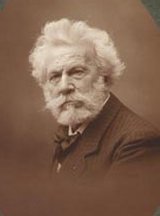 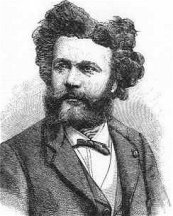 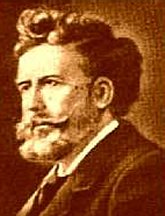 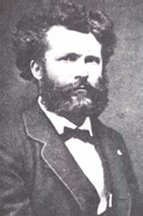
Go
to the Flammarion Gallery:
The
Man and His Work
ERBzine
3197a
Web Resources::
Flammarion:
A French Site
Yahoo!
Encyclopedia
An
Observational History of Mars
New Astronomy
Flammarionmooncrater |


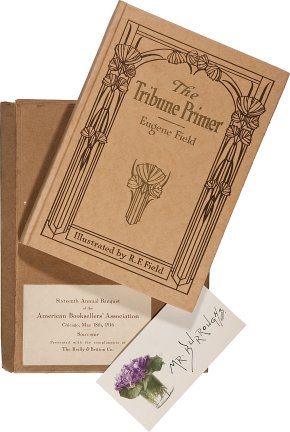

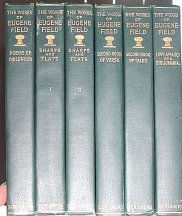
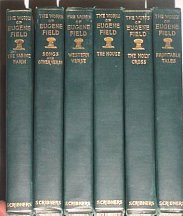
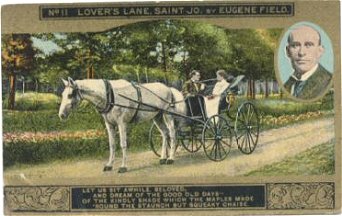
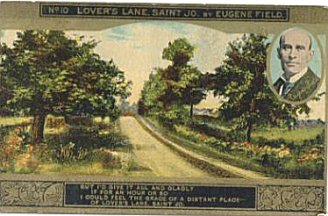
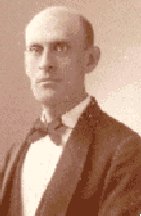 Eugene Field
was
an unusual poet. He was one of the few poets who wrote only children's
poetry. That is how he got his nickname, The Children's Poet. It all started
September 2, 1850, at 634 South Broadway in Saint Louis. That's where and
when Eugene Field was born. He had one brother named Roswell, who was one
year younger than he, and a sister who died soon after her birth. He and
his brother were very close, but very different. Eugene took after their
mother, Francis, while Roswell took after their father. Eugene was afraid
of the dark while his brother wasn't afraid of anything. Eugene hated studying
while Roswell loved it. When the boys were six and five, their mother died.
Mr. Field sent them to live with their cousin, Mary French, in Massachusetts
until he could take care of them. While living on their cousin's farm,
Eugene wrote his first poem . He was nine then, and the poem was about
their cousin's dog, Fido. At the age of fifteen, Eugene was shipped off
to a small private school in Massachusetts. There were only five boys in
the school, and Eugene loved leading the boys in tricks against the master
of the school. Eugene went on to William's College in Massachusetts. Unfortunately,
his father died when he was nineteen and he dropped out after eight months.
Next he went to Knox College but dropped out of college after a year. Then
he went to the University of Missouri, where his brother was also
attending. While there, he met Julia Comstock, who was fourteen. When Julia
turned sixteen, she and Eugene married. They had eight children.
Two died as babies, another died as a little boy. The remaining five grew
up and had long lives. While married, Eugene had many jobs. He worked for
many newspapers until the Chicago Daily News offered him a job and asked
him to write "exactly what I please on any subject I please.". He wrote
a humorous column called "Sharps and Flats". Eugene Field died in his sleep
on November 4, 1895, 62 days after his 45th birthday, a young man at the
height of his career, famous for both his poetry and his column, and the
father of five surviving children. He is buried in the churchyard
of the Church of the Holy Comforter in Kenilworth, Illinois. He had written
many poems, and had accomplished everything he had wished to accomplish.
Eugene Field will be remembered mostly for being a children's poet. Some
of his most famous poems are "Wynken, Blynken, and Nod"; "The Duel"; and
"Little Boy Blue".
Eugene Field
was
an unusual poet. He was one of the few poets who wrote only children's
poetry. That is how he got his nickname, The Children's Poet. It all started
September 2, 1850, at 634 South Broadway in Saint Louis. That's where and
when Eugene Field was born. He had one brother named Roswell, who was one
year younger than he, and a sister who died soon after her birth. He and
his brother were very close, but very different. Eugene took after their
mother, Francis, while Roswell took after their father. Eugene was afraid
of the dark while his brother wasn't afraid of anything. Eugene hated studying
while Roswell loved it. When the boys were six and five, their mother died.
Mr. Field sent them to live with their cousin, Mary French, in Massachusetts
until he could take care of them. While living on their cousin's farm,
Eugene wrote his first poem . He was nine then, and the poem was about
their cousin's dog, Fido. At the age of fifteen, Eugene was shipped off
to a small private school in Massachusetts. There were only five boys in
the school, and Eugene loved leading the boys in tricks against the master
of the school. Eugene went on to William's College in Massachusetts. Unfortunately,
his father died when he was nineteen and he dropped out after eight months.
Next he went to Knox College but dropped out of college after a year. Then
he went to the University of Missouri, where his brother was also
attending. While there, he met Julia Comstock, who was fourteen. When Julia
turned sixteen, she and Eugene married. They had eight children.
Two died as babies, another died as a little boy. The remaining five grew
up and had long lives. While married, Eugene had many jobs. He worked for
many newspapers until the Chicago Daily News offered him a job and asked
him to write "exactly what I please on any subject I please.". He wrote
a humorous column called "Sharps and Flats". Eugene Field died in his sleep
on November 4, 1895, 62 days after his 45th birthday, a young man at the
height of his career, famous for both his poetry and his column, and the
father of five surviving children. He is buried in the churchyard
of the Church of the Holy Comforter in Kenilworth, Illinois. He had written
many poems, and had accomplished everything he had wished to accomplish.
Eugene Field will be remembered mostly for being a children's poet. Some
of his most famous poems are "Wynken, Blynken, and Nod"; "The Duel"; and
"Little Boy Blue".
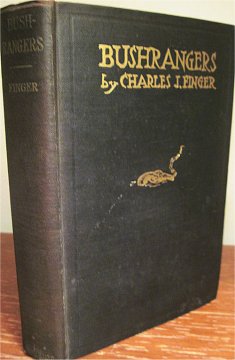
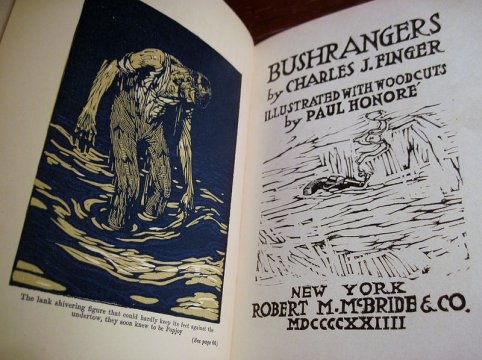
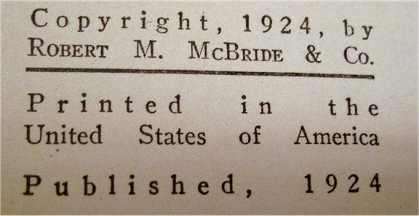
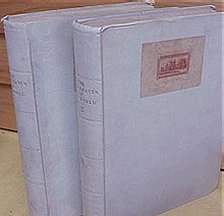
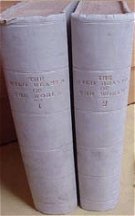
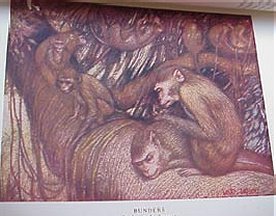
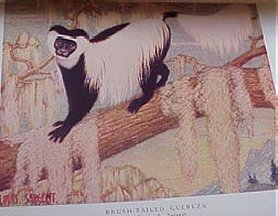
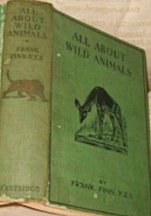
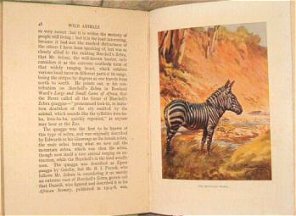
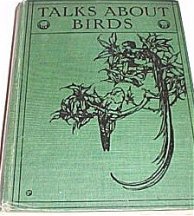
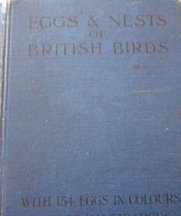
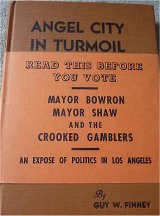
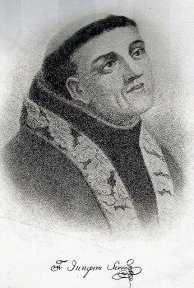
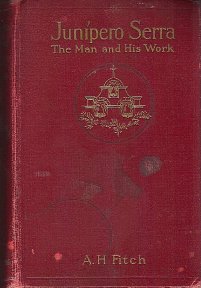

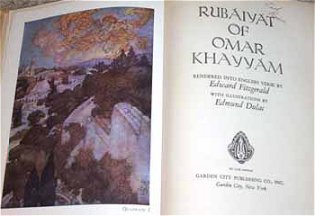
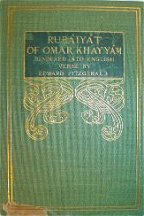
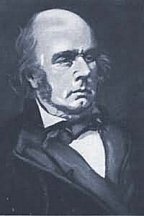
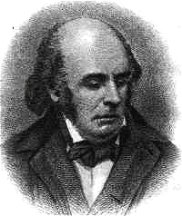
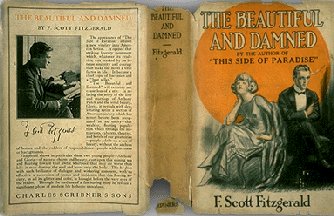
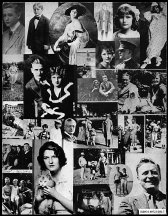
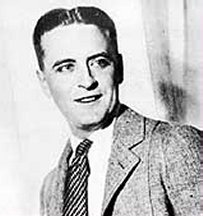 F. Scott Fitzgerald(1896-1940)
is best known for his novels and short stories which chronicle the excesses
of America's 'Jazz Age' during the 1920s. Born into a fairly well-to-do
family in St Paul, Minnesota in 1896 Fitzgerald attended, but never graduated
from Princeton University. Here he mingled with the monied classes from
the Eastern Seaboard who so obsessed him for the rest of his life. In 1917
he was drafted into the army, but he never saw active service abroad. Instead,
he spent much of his time writing and re-writing his first novel This Side
of Paradise, which on its publication in 1920 became an instant success.
In the same year he married the beautiful Zelda Sayre and together they
embarked on a rich life of endless parties. Dividing their time between
America and fashionable resorts in Europe, the Fitzgeralds became as famous
for their lifestyle as for the novels he wrote. Fitzgerald once said 'Sometimes
I don't know whether Zelda and I are real or whether we are characters
in one of my novels'. He followed his first success with The Beautiful
and the Damned (1922), and The Great Gatsby (1925) which Fitzgerald considered
his masterpiece. It was also at this time that Fitzgerald wrote many of
his short stories which helped to pay for his extravagant lifestyle. The
bubble burst in the 1930s when Zelda became increasingly troubled by mental
illness. Tender is the Night (1934), the story of Dick Diver and his schizophrenic
wife Nicole, goes some way to show the pain that Fitzgerald felt. The book
was not well received in America and he turned to script-writing in Hollywood
for the final three years of his life. It was at this time he wrote the
autobiographical essays collected posthumously in The Crack-Up and his
unfinished novel, The Last Tycoon. He died in 1940.
F. Scott Fitzgerald(1896-1940)
is best known for his novels and short stories which chronicle the excesses
of America's 'Jazz Age' during the 1920s. Born into a fairly well-to-do
family in St Paul, Minnesota in 1896 Fitzgerald attended, but never graduated
from Princeton University. Here he mingled with the monied classes from
the Eastern Seaboard who so obsessed him for the rest of his life. In 1917
he was drafted into the army, but he never saw active service abroad. Instead,
he spent much of his time writing and re-writing his first novel This Side
of Paradise, which on its publication in 1920 became an instant success.
In the same year he married the beautiful Zelda Sayre and together they
embarked on a rich life of endless parties. Dividing their time between
America and fashionable resorts in Europe, the Fitzgeralds became as famous
for their lifestyle as for the novels he wrote. Fitzgerald once said 'Sometimes
I don't know whether Zelda and I are real or whether we are characters
in one of my novels'. He followed his first success with The Beautiful
and the Damned (1922), and The Great Gatsby (1925) which Fitzgerald considered
his masterpiece. It was also at this time that Fitzgerald wrote many of
his short stories which helped to pay for his extravagant lifestyle. The
bubble burst in the 1930s when Zelda became increasingly troubled by mental
illness. Tender is the Night (1934), the story of Dick Diver and his schizophrenic
wife Nicole, goes some way to show the pain that Fitzgerald felt. The book
was not well received in America and he turned to script-writing in Hollywood
for the final three years of his life. It was at this time he wrote the
autobiographical essays collected posthumously in The Crack-Up and his
unfinished novel, The Last Tycoon. He died in 1940.
